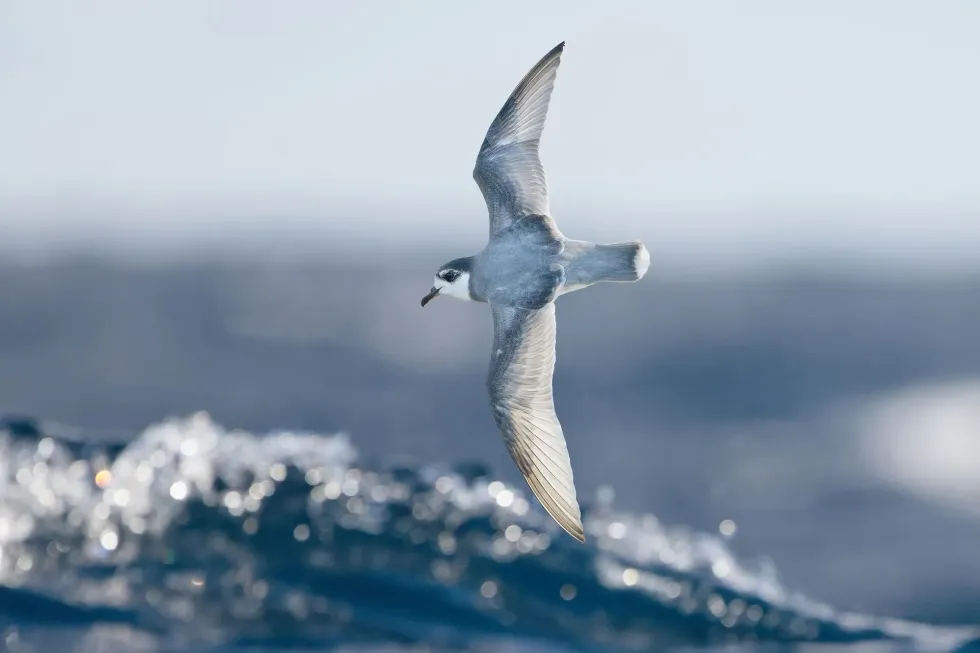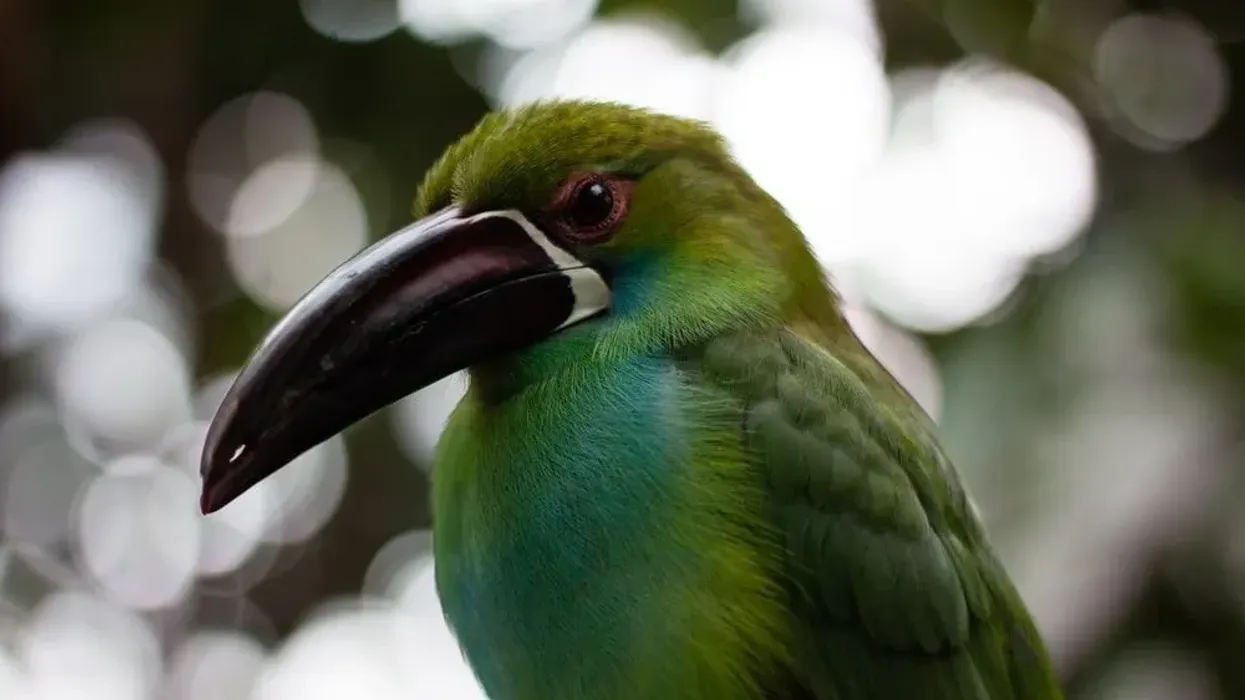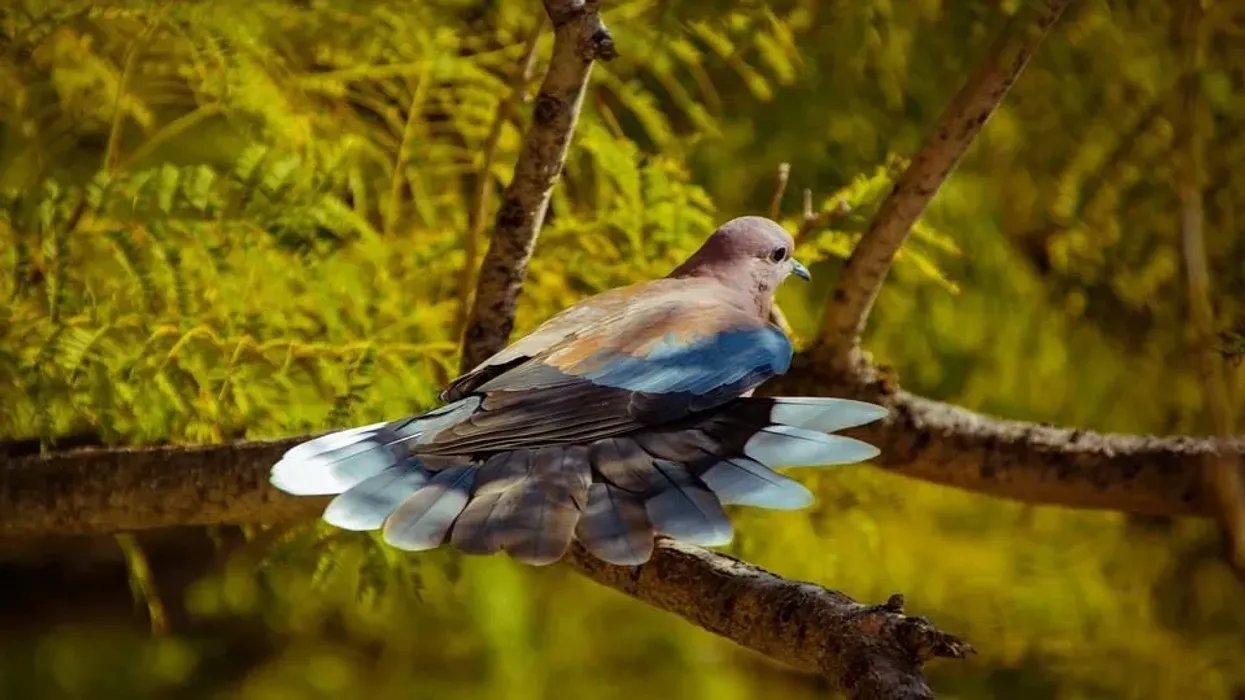In this article, we will learn about the bright seabird - the blue petrel (scientific name Halobaena caerulea). This bird is rather small for a seabird.
It belongs to the genus Halobaena, order Procellariiformes. The blue petrel (Halobaena caerulea) is the only member who belongs to the genus Halobaena. The blue petrel species can be found in abundance near the Southern Ocean.
The blue petrel range map includes various islands like the Kerguelen Islands, Crozet Islands, Marion Island, Prince Edward Island, Macquarie Island as well as South Georgia. As the name suggests, this sea bird has a blue-gray plumage. A distinct 'M' banding can also be spotted on its top similar to other prions.
It has a broad white-tipped tail which is dark and gray-blue towards the top. It also has a black collar that runs through its neck to its eyes.
The juvenile blue petrel species, on the other hand, has a browner plumage with brown upperparts and also sports a grayer forehead as well. These birds nests in self excavated burrow and live in colonies.
Female lays about one egg. The chick develops its flying ability in about 55 days. Please keep reading to know more about this fascinating sea bird and its behavior.
If you enjoy reading this article and learning about petrels, be sure to check out northern giant petrel and storm petrel!
Blue Petrel Interesting Facts
What type of animal is a blue petrel?
The blue petrel (Halobaena caerulea) is a type of seabird that inhabits the region within the Southern Ocean.
What class of animal does a blue petrel belong to?
The blue petrel species, found in the Southern Ocean, belong to class Aves, order Procellariiformes.
How many blue petrels are there in the world?
There are a few million blue petrels (Halobaena caerulea) birds in the world. In the Diego Ramirez islands, there are about 1,000,000 pairs, a population of 100,000 pairs in Prince Edward Island, between 100,000-200,000 population in the Kerguelen Islands, 40,000-180,000 population in the Crozet Islands, and about 70,000 pairs in South Georgia.
On Macquarie Island, less than 100 pairs can be spotted.
Where does a blue petrel live?
This small-sized bird species can be found in the Southern Atlantic and Indian oceans. The blue petrel species can be found breeding in various locations such as Prince Edward, South Georgia, Crozet Islands, Marion, Kerguelen islands, Macquarie Islands, and Cape Horn.
What is a blue petrel's habitat?
In regards to habitat, the blue petrel species large range extends from South Africa to South America. These birds are pelagic and can be found in Antarctic and sub-antarctic waters. The nests of these birds can be located in a self excavated burrow.
Who does a blue petrel live with?
The blue petrels species are highly social in nature and can be found living in large colonies.
How long does a blue petrel live?
This species has a long lifespan. These birds can live up t0 20 years. Compared to them, Antarctic petrels have a similar lifespan.
How do they reproduce?
The blue petrels live in large colonies. The female lays one egg. The nest is located in a burrow. Both the parents participate in the incubation of the eggs. The incubation period lasts for about 50 days. The chicks develop the ability to fly after approximately 55 days.
What is their conservation status?
The blue petrel (Halobaena caerulea) has been evaluated and listed as Least Concern by the International Union for Conservation of Nature or the IUCN in the Red List of Threatened Species.
Blue Petrel Fun Facts
What does a blue petrel look like?
As the name suggests, the bird's plumage is a vibrant blue with gray. It has a distinctive 'M' shaped banding across its top.
Some of this bird's features are identical to other birds belonging to the order Procellariiformes. It also has a dark, gray-blue, broad white-tipped tail. On its head, a partial black collar can be seen, which starts from around the eye and extends to its neck.
This black collar provides a stark contrast to its white forehead. The juvenile blue petrel has browner upperparts instead of blue-gray and sports a grayer forehead as well.
How cute are they?
These birds appear to be quite cute, even though they are not as colorful as the oriental dwarf kingfisher. Their bluish-gray plumage makes them aesthetically pleasing to look at. During their flight, they also appear to be majestic.
How do they communicate?
Blue petrels are said to be more vocal when in large colonies. The call of the adult blue petrel sounds familiar to that of a pigeon - 'kuk-kuk-kuk- coo-coo'.
These calls can mainly be heard during the night time or while in flight. The bird calls of the petrels can vary from island to island. They are also known to give caking calls as well.
How big is a blue petrel?
The blue petrel is a small-sized sea bird with a length of about 11 in (28 cm). The wingspan has a length of 26 in (66 cm). In comparison, the black petrel is bigger than them, with a wingspan range that is almost one and half times longer.
How fast can a blue petrel fly?
Blue petrels have a flying speed of about 36 ft/s (11 m/s). The flight of the blue petrel is buoyant. Their flight is also much less erratic in comparison to other prions.
How much does a blue petrel weigh?
These birds usually weigh between the range of 0.3-0.5 lb (150-25o g).
What are the male and female names of the species?
No unique names are used to refer to the male and female blue petrels.
What would you call a baby blue petrel?
Baby blue petrels can be referred to as chicks or fledglings.
What do they eat?
Most commonly, the blue petrel feeds on various crustaceans. Krill is the most common one, whereas other fish like squids can also be consumed. Their feeding behavior includes capturing their prey by dipping while they are in mid-flight or when they are swimming. The methods to capture their prey include surface dipping, surface diving as well as surface seizing.
Are they dangerous?
No, the blue petrel sea bird does not cause any danger or harm to human beings. They may be a little dangerous as predators but do not cause harm to others.
Would they make a good pet?
These sea birds living in the Southern Ocean are not to be kept as domestic pets. These birds are pelagic and spend most of their lives on the sea living in colonies.
Did you know...
The blue petrel has a bill which is the smallest among the other prions.
The blue petrel has nasal passages that are attached to its upper bill. These are called naricorns.
The blue petrels are known to produce a foul-smelling oil from the stomach, which is stored in their proventriculus. This stomach oil is used for two reasons. One, it is used as a protective mechanism against potential predators, and two, this oil acts as a rich food source for chicks as well as adult blue petrel birds.
The bills of the blue petrel are split between seven and nine horny plates.
The word 'petrel' has been derived from Saint Peter. Saint Peter's story of walking on water and the habit of petrels of running on water to take off is the reason behind this name.
Are blue petrels social?
During the breeding season, the blue petrels become highly social. They are colonial in nature and can be found forming and inhabiting large colonies.
Do blue petrels have any natural predators?
The blue petrel bird does have natural predators. Their predators include rats as well as cats depending on their location, but their biggest predators are the skuas. The skuas are a group of predatory seabirds that prove to be the biggest threat to the blue petrel chick, adults as well as their egg.
Here at Kidadl, we have carefully created lots of interesting family-friendly animal facts for everyone to discover! For more relatable content, check out these elegant crested tinamou facts and dusky moorhen facts for kids.
You can even occupy yourself at home by coloring in one of our free printable Baby Bird On Branch coloring pages.
Image one by JJ Harrison.
Image two by Christopher Jones.









